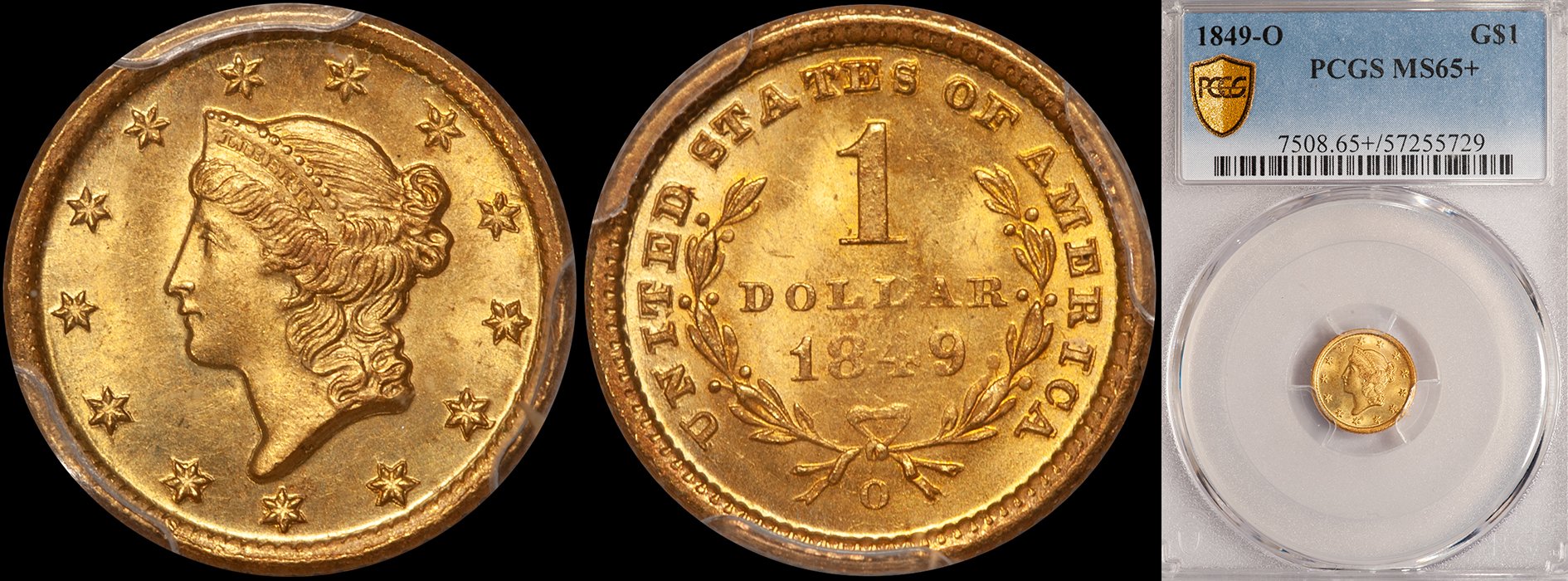Heritage August Signature Sale Preview
/I recently returned from Dallas where I was viewing auction lots for Heritage’s August Signature Sale. Heritage never seems to run out of coins to sell and, as usual, their catalogs were massive. In fact, I am thinking of charging them for a chiropractic visit as a result of a throbbing shoulder courtesy of having to schlep the catalogs through DFW and Portland airports in my now-deformed briefcase. Now that I’m back home, I’ve had a chance to analyze the Heritage sales and thought I’d share my thoughts about the coins that are being sold.
For the most part, I was more impressed with the non-gold in the sale than the gold. One item that really caught my eye was Lot 5055, which is an amazing NGC MS67 1862 Indian Cent die cap. For the most part, I am not a really big fan of errors but this was the error to end all errors. A die cap is caused when a planchet gets stuck in the die and the planchet is repeatedly struck. As a result, this die cap shows amazing detail on the coin itself and a stunning fan-shaped pattern with no less than eight distinct tabs. If I am not mistaken, this piece was in an ANR sale around three years ago but, for whatever reason, it really caught my attention this time. I would not be surprised to see this spectacular piece break the $50,000 mark.
Another coin that was pretty remarkable was Lot 5264, a 1906-S half dollar graded MS69 (!) by NGC. This is the only business strike barber half dollar ever graded this high by either service and the coin was awfully nice. Did NGC get carried away a little with the grade? Probably. Does a finer business strike Barber half dollar exist? Possibly. But, man, was this a seriously lovely coin!
Enough of this non-gold chit chat. You are reading this blog to know my thoughts on the gold coins in the sale. My overall impression was that the quality was spotty. There were some great single coins here and there and a nifty collection of Liberty Head double eagles but I did not find this to be one of Heritage’s more impressive offerings of gold.
It was interesting to compare the coins in old holders (i.e., the ones that were “fresh”) versus the ones that were “maxed out.” An example of a lovely fresh coin was Lot 5417, a PCGS MS61 1796 No Stars quarter eagle. Unlike most of the examples of this celebrated date that have been offered in recent years, this piece wasn’t stripped of its original color and had a lot of luster below its attractive color. But just so you don’t think that I automatically go ga-ga over any coin in an old green label PCGS holder, the next lot, a PCGS AU58 1796 With Stars quarter eagle showed an old cleaning on its obverse and, even by today’s inflated standards, was not really high end for the grade.
I have to mention the NGC PR67 1879 Flowing Hair Stella because I can’t resist writing the following: it was one Helluva Stella. If I were in the market for a killer example of this type, I’d buy this coin. It was superb.
I was fairly underwhelmed by the rest of the early gold and much of the branch mint issues although a few treasures did poke their little plastic heads up from time to time. You have to begin to wonder, are there any original Charlotte and Dahlonega coins left? Have the coin doctors gotten to every last piece? It was interesting looking at the high grade Philadelphia coins, which had original surfaces and comparing them to their doctored branch mint counterparts. One coin I did love was Lot 5507, an 1856-C half eagle in PCGS MS63. It was easily the finest example of this rare date that I have ever seen.
And, believe it or not, there were some Proof gold coins in the sale with original hazy surfaces (!) I was beginning to wonder if any of these had survived the dipping trays and chemistry sets of America’s coin dealers… If you’d like to know what a piece of original Proof gold looks like, study Lots 5514 and 5516.
For me, the most interesting deal in the sale was the Wyoming Collection of Liberty Head double eagles. I had sold some of the coins in this set to the owner and was excited when I heard his collection was for sale.
The star attraction of the collection is the 1861 Paquet reverse double eagle (Lot 5623). While not really widely known outside of the gold collecting community, this is actually the second rarest regular issue American gold coin, trailing only the 1870-S Three Dollar. Only two examples are known and it will be very interesting to see what this piece will bring. I predict it will bring between $1.5 and $2 million.
The sale includes a full run of New Orleans double eagles including the very rare 1854-O and 1856-O. Both are graded AU50 by PCGS and it will be interesting to see if prices for these two coins continue the amazing upwards march that they have shown for the past five years.
I will be attending the Heritage sale on August 13th and August 14th and would be pleased to provide you with auction representation service. If you are interested, please contact me immediately.










